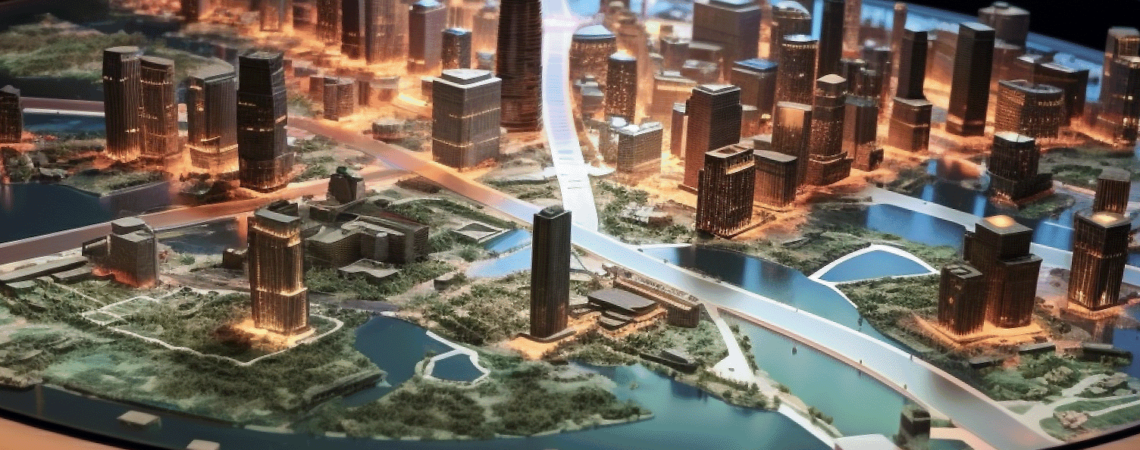
The ideal 3D real estate service provider surpasses the traditional real estate agent in several ways. Firstly, the former optimizes innovative architectural rendering and visualization technologies for listings and tours.
Secondly, the 3D real estate provider uses 3D rendering and visualization for marketing purposes, improving visibility, conversion, profitability, and return on investment.
This article will explore 3D real estate visualization services and the nuances of 3D rendering real estate services.
Who is a 3D Rendering Real Estate Service Provider?
A 3D real estate provider utilizes 3D rendering and touring tools to give potential clients and customers immersive experiences.
Many 3D tools are used for real estate purposes. 3D rendering and visualization tools include Autodesk 3Ds Max, Blender, Cinema 4D, Autodesk Maya, Rhino 3D, V-Ray, and Lumion, amongst others.
3D tour tools include Matterport, Cupix, and EyeSpy 360. A professional who offers 3D visualization for real estate uses some of these tools for 3D modeling, 3D visualization, and 3D rendering purposes.
Key Features of a 3D Real Estate Service Provider
3D Architectural Rendering:
3D architectural rendering is the process of converting 3D models into 2D renders. 3D architectural rendering is crucial to real estate service providers. With this service, professionals can:
Develop renders for clients: A 3D render and visual is a photorealistic representation of a project. For example, a 3D real estate rendering firm can build a photorealistic visual of a bridge even before a single block is laid.
The 3D render will contain aesthetic details, spatial arrangement, lighting, and texture, amongst other elements. Thoroughly calculated models also back the visuals.
Use render for communication and collaboration:
3D renders are excellent for architects, engineers, and construction experts to collaborate on. Since the render gives a complete picture of the final product, including the dimensions and layout, professionals will know beforehand which layer comes first in the building process.
Interior and Exterior Design:
3D rendering and architecture have revolutionized the interior and exterior design sphere, allowing companies that offer real estate 3D rendering services to design virtual and near-life representations of the natural environment.
Let’s take a room: A 3D render and visualization of a room can be used to determine what goes where. It can also be used to tweak paint colors, accessories, furnishings, and utilities.
With this technology, professionals and clients can experiment with different colors and designs to find the perfect combination of elements for a thoroughly aesthetic and functional internal design.
3D Tour:
In today’s world, real estate agents offer virtual tours of real estate listings. With virtual tours, potential buyers experience an immersive sensation, as if they are in the building.
The purpose of a virtual tour is to ensure that clients who do not live near the property can see the property (texture, color, layout, utility placement, furnishings, and other intricate details).
Virtual tours are also used as marketing tools. Many 3D real estate service providers leverage 3D tours to sell properties online.
3D Modeling:
3D modeling involves using elements like lines, triangles, rectangles, and circles to create models for real-life objects. 3D modeling is fundamental to 3D rendering and visualization. A 3D model of a table can be a rectangle and four spherical legs.
3D models do not tell the complete features of space; however, they are necessary to define how objects in the model interact with each other.
What Makes a 3D Real Estate Renderings Service Stand Out?
Compatible technology and tools: Your company or agency will stand out if it offers an array of 3D rendering and visualization services with trending and innovative tools.
Communication:
Beyond the technology, a 3D visualization and rendering firm or service provider should be able to communicate ideas through renders and visuals.
When dealing with a non-technical client, you must break down complicated terms and processes. Carry your client along.
Cultural compatibility:
When you take a job, you must consider the artistic leanings of your client. For example, an Asian client might have a different idea of perfect aesthetics than an American client.
Conclusion
In conclusion, an ideal 3D rendering real estate service provider excels in architectural rendering, interior and exterior design, virtual tours, and 3D modeling.
While technology is important, the service provider must also focus on communication, collaboration, and cultural and stylistic compatibility.


